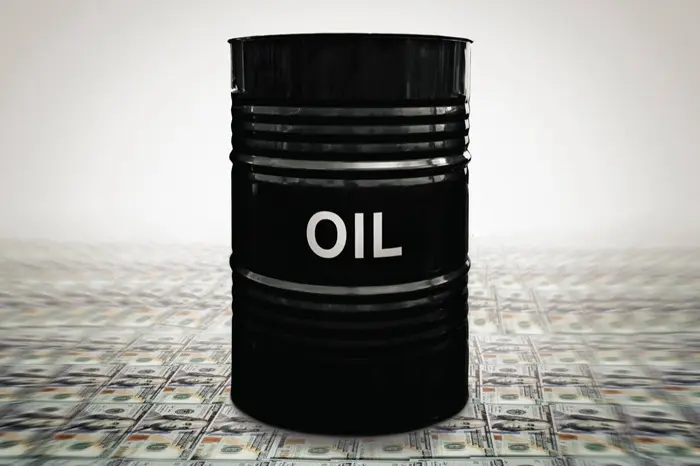Crude oil, a pivotal resource in the modern world, powers industries, transportation, and homes. Understanding the original source of the energy in crude oil provides insight into its formation, utilization, and future implications. This article delves into the origins of crude oil’s energy, exploring the geological, biological, and chemical processes that have led to its creation.
The Formation of Crude Oil
Geological Timescales
Crude oil formation spans millions of years, originating from ancient organic matter. Geological processes play a crucial role in transforming this matter into oil. The primary sources of organic matter are microscopic marine organisms, such as plankton and algae, which thrived in prehistoric oceans.
Organic Matter Deposition
When these organisms died, their remains settled on the ocean floor, mixing with sediments. Over time, layers of sediment accumulated, burying the organic matter. This process, known as sedimentation, is the first step in crude oil formation.
Diagenesis and Kerogen Formation
As sediments accumulated, the organic matter underwent diagenesis, a low-temperature, early stage of transformation. During diagenesis, biological activity and chemical reactions converted the organic material into a waxy substance called kerogen. Kerogen is a precursor to crude oil and natural gas.
See Also: 5 Regions Producing The Best Crude Oil
The Role of Heat and Pressure
Catagenesis
Catagenesis is the second stage of crude oil formation, occurring under higher temperatures and pressures. As sediment layers became thicker, the increasing pressure and heat initiated chemical reactions within the kerogen. These reactions broke down large, complex molecules into simpler hydrocarbons, leading to the formation of crude oil and natural gas.
Maturation of Kerogen
The maturation of kerogen into crude oil involves temperatures typically ranging from 60 to 120 degrees Celsius. This process can take millions of years. The depth of burial and the geothermal gradient (rate of temperature increase with depth) significantly influence the maturation process.
Crude Oil Reservoirs
Once formed, crude oil can migrate through porous rock layers until it becomes trapped in reservoirs. These reservoirs are often capped by impermeable rock, preventing the oil from seeping to the surface. The geological formations that trap crude oil are known as oil traps.
The Biological Origins of Crude Oil
Marine Organisms
The primary source of the organic matter that eventually becomes crude oil is marine microorganisms, including phytoplankton and zooplankton. These organisms are abundant in the ocean and form the base of the marine food web.
Photosynthesis and Carbon Fixation
Phytoplankton, like terrestrial plants, utilize photosynthesis to convert sunlight into chemical energy. They absorb carbon dioxide from the water and use sunlight to produce organic compounds. This process, known as carbon fixation, stores energy in the chemical bonds of organic molecules.
Organic Matter Accumulation
When marine organisms die, their organic matter accumulates on the ocean floor. In environments with low oxygen levels, this matter is less likely to decompose completely, increasing the chances of preservation and eventual transformation into kerogen.
Chemical Composition and Energy Content
Hydrocarbons
Crude oil is primarily composed of hydrocarbons, molecules made up of hydrogen and carbon atoms. These hydrocarbons vary in complexity, from simple molecules like methane (CH4) to complex chains and rings of carbon atoms.
Energy-Rich Bonds
The energy content of crude oil is stored in the chemical bonds of hydrocarbons. When hydrocarbons are burned, these bonds are broken, releasing energy in the form of heat. This energy release is the basis for crude oil’s use as a fuel.
Types of Hydrocarbons
Crude oil contains various types of hydrocarbons, including alkanes, cycloalkanes, and aromatic hydrocarbons. The specific composition of crude oil can vary significantly depending on its source and geological history.
The Energy Conversion Process
Extraction and Refining
The process of extracting crude oil from reservoirs and refining it into usable products involves several stages. Once extracted, crude oil undergoes refining to separate it into different components, such as gasoline, diesel, and jet fuel.
Combustion
The primary method of extracting energy from crude oil is combustion. During combustion, hydrocarbons react with oxygen to produce carbon dioxide, water, and energy. This energy can be harnessed to power engines, generate electricity, and heat homes.
Energy Efficiency
The efficiency of energy conversion from crude oil depends on the technology used. Modern engines and power plants are designed to maximize the energy extracted from crude oil, reducing waste and improving overall efficiency.
Environmental Impact
Carbon Emissions
Combustion of crude oil releases carbon dioxide, a greenhouse gas that contributes to global warming. The carbon content of crude oil, originating from ancient organic matter, is released back into the atmosphere when burned.
Pollution
Oil extraction, transportation, and refining can lead to environmental pollution. Oil spills, air and water pollution, and habitat destruction are significant concerns associated with crude oil production.
Renewable Alternatives
The environmental impact of crude oil has led to increased interest in renewable energy sources, such as solar, wind, and biofuels. These alternatives aim to reduce carbon emissions and dependence on fossil fuels.
The Future of Crude Oil
Depletion of Reserves
Crude oil is a finite resource, and the world’s reserves are being depleted. As easily accessible oil fields are exhausted, the industry is turning to more challenging and expensive sources, such as deep-sea drilling and tar sands.
Energy Transition
The global energy landscape is shifting towards renewable energy and sustainability. Advances in technology and changes in policy are driving the transition away from fossil fuels, including crude oil.
Innovations in Energy Extraction
Innovations in energy extraction, such as enhanced oil recovery techniques and carbon capture and storage, aim to maximize the efficiency and minimize the environmental impact of crude oil production.
Conclusion
The energy in crude oil originates from ancient marine organisms that captured and stored solar energy through photosynthesis. Over millions of years, geological and chemical processes transformed this organic matter into hydrocarbons, which we extract and use as a valuable energy source today. Understanding the origins and formation of crude oil not only provides insights into its current use but also highlights the need for sustainable energy solutions for the future. The finite nature of crude oil reserves and the environmental impact of its use underscore the importance of transitioning to renewable energy sources.
Related topics:






























